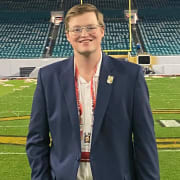With the Help of Alabama Athletics, Tuscaloosa Has Been Rebuilt Stronger 10 Years Following Deadly Tornado
TUSCALOOSA, Ala. — The hand of God slamming down on Earth.
That’s how Walt Maddox recalled the destruction left behind by an EF-4 tornado on April 27, 2011 that destroyed over 12 percent of Tuscaloosa, killing 53 people, injuring over 1,200 and leveling over 7,000 homes and a few thousand businesses.
“None of us could have imagined what took place that day,” Maddox, who has been the mayor of Tuscaloosa since 2005, told BamaCentral on the All Things Bama Podcast. “I was in our incident-command center, which is two floors under the street at City Hall, and like everyone else, I watched it on a monitor and it was just a surreal experience. As we went back up the stairs, I remember one of my commanders telling me that the Curry facility was destroyed and that 15th street was gone and those initial reports seemed so exaggerated to me.
“But when we left City Hall and got out into the field, 15 minutes later, it looked like the hand of God had slammed down on the city.”
In the immediate aftermath, Maddox and his team found themselves putting back the pieces of what was left of the city. Thirty-seven different municipal governments, the Alabama National Guard, FEMA and other federal partners came to aid the city in a time of devastating need.
Even two days following the tornado, former President Barack Obama and First Lady Michelle Obama came to visit to get a glimpse of the destruction firsthand.
But maybe the most impactful assistance came from the University of Alabama athletic department, namely coach Nick Saban and his wife, Terry.
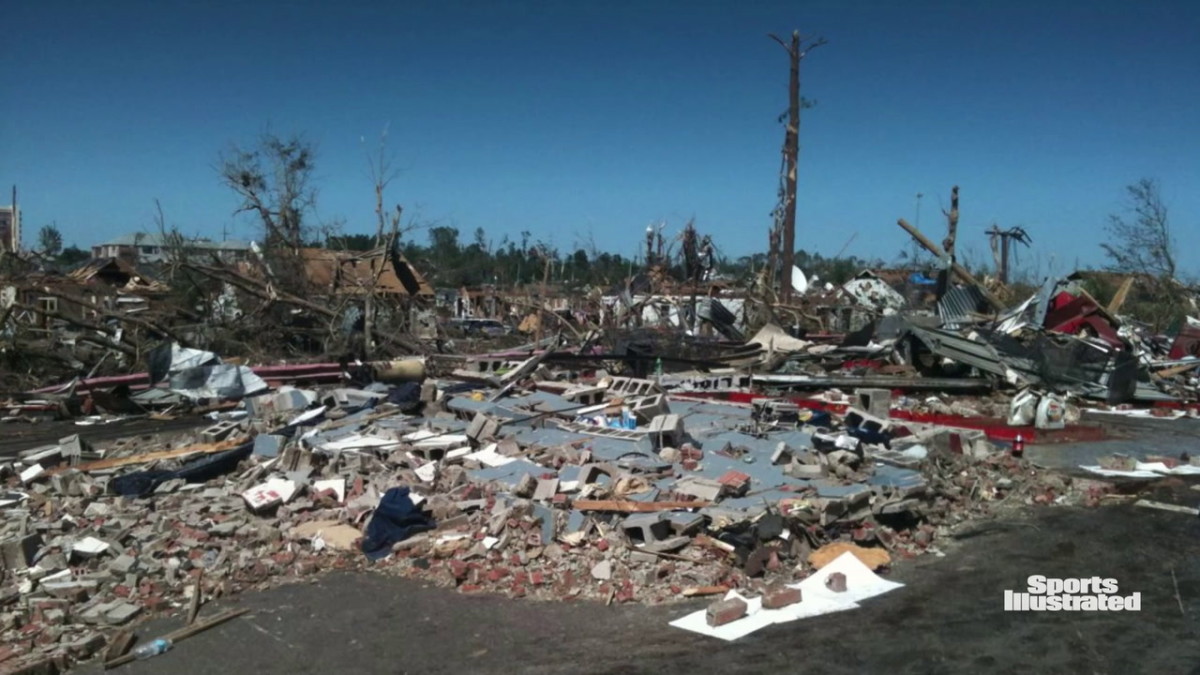
“I remember driving down 15th Street the morning afterwards and seeing Coach Saban on a golf cart,” Maddox said. “I hadn’t slept that night so you didn’t know if you were at the point of hallucination or not. Then later that day, I saw [former Crimson Tide men’s basketball coach] Anthony Grant on top of a roof patching up a home. You are dealing with so many issues at the time so you can’t really process that but then you begin to realize that this is something bigger than any of us could have imagined.”
“They have done a lot of things quietly as well that they don’t want people to know their name is behind,” Maddox said. “They do all this because Tuscaloosa is their home. Those little things mean a lot. Just look at what they done with Habitat for Humanity. Tuscaloosa is very fortunate that the Sabans call it home.”
Along with meeting the physical need in the city, Saban and the Crimson Tide program won its then-14th national championship not even nine months later. Alabama won another national title the following season.
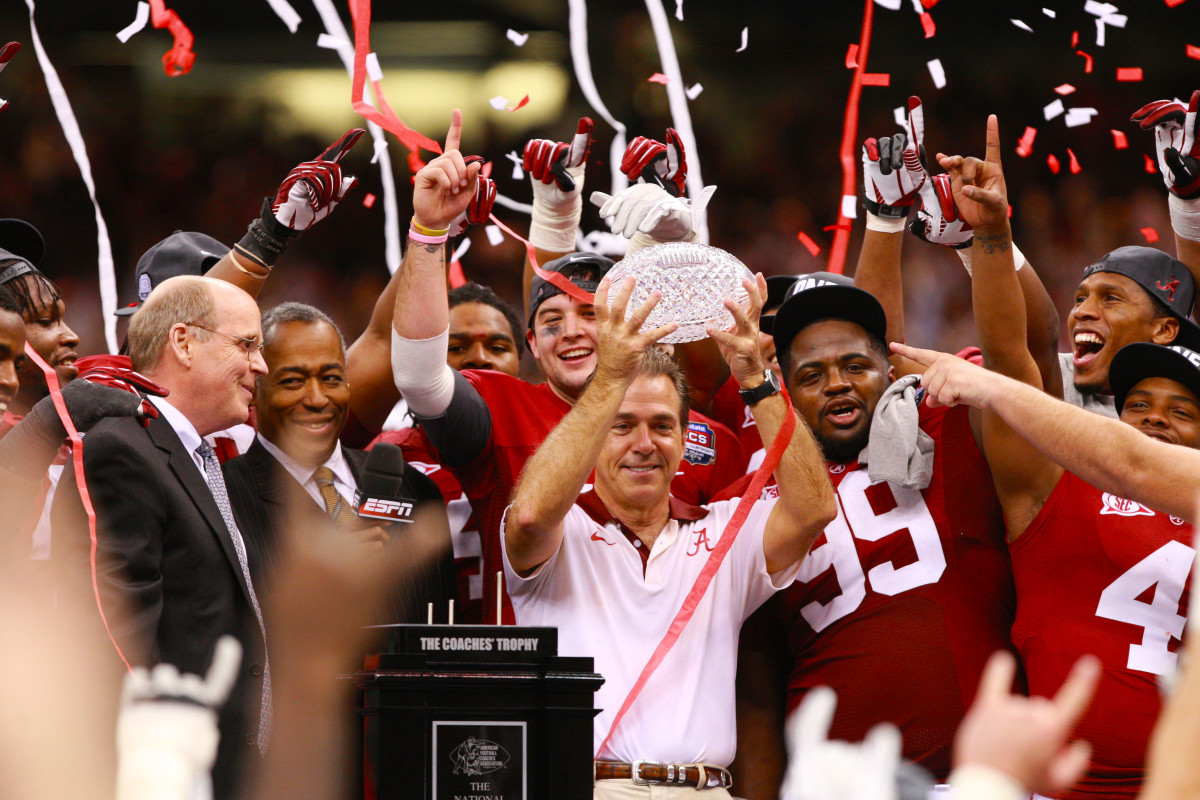
That on-field success trickled down into other sports, who used the tornado and the lives lost on that fateful April day as motivation to excel at the highest level. Women's golf, softball and gymnastics all claimed national championships in 2012.
Alabama men’s golf reached the final match of the NCAA Championships three straight years from 2012 to 2014 and captured two titles. Even Grant and the men’s basketball program reached the NCAA Tournament for the first time in six years following the deadly event.
Maddox noted that the athletic achievements were for the city, at that time, invaluable in their recovery efforts.
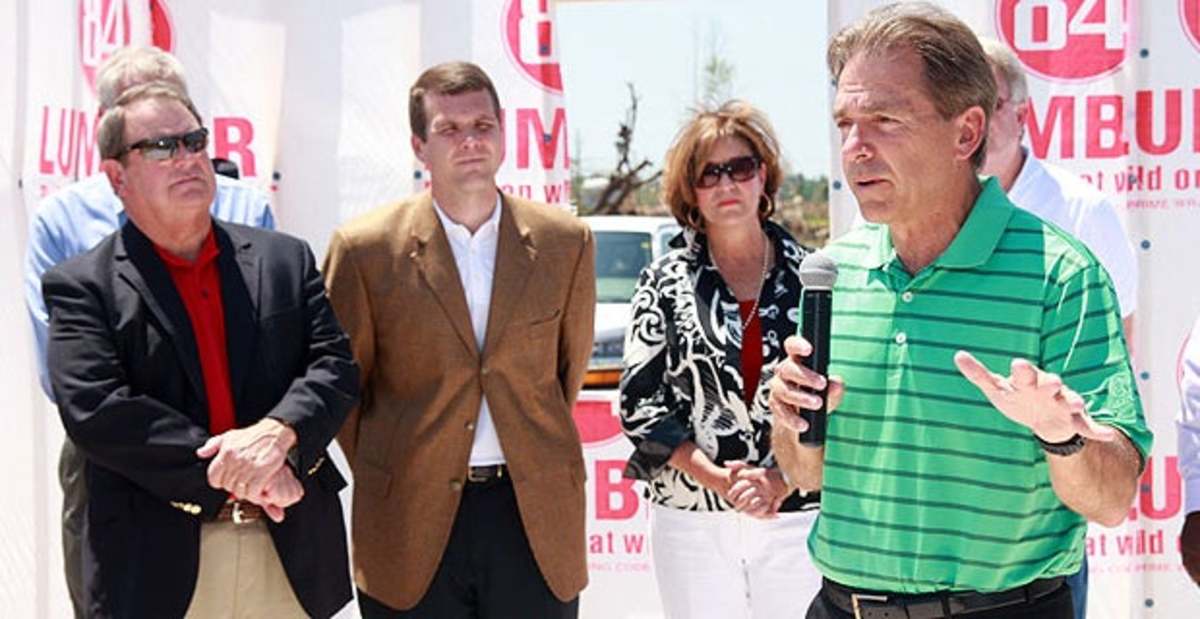
“For our city to go through hell and back, to have something that can divert our attention, you can’t put a price tag on what that means,” Maddox said. “No, it certainly doesn’t bring anyone back but it gives you that hope and hope is a very powerful tool in your recovery.
"You also can't underestimate the value of the University of Alabama and what it means for this community. Certainly, there's an economic impact of the university as a whole of $2 billion. Whenever we would hit those low points in recovery, whether it was Patrick Murphy and what he was doing in softball, Sarah Patterson and gymnastics and certainly Coach Saban, that gave us hope and inspiration along the way."
With the two football national championships, invitations to the White House for the team and Maddox were extended, and helped continue to put Tuscaloosa in the national spotlight.
"A great thing about winning national championships meant that we got to go to the White House," Maddox said. "It gave us time to spend with the president and allowed me to share with him and his team what we were doing to recover. To his credit, [Obama] remembered being here in Tuscaloosa. As a mayor of a town with only 100,000, to get that kind of access was special. You can't underestimate those little things. The big thing is that we won national championships but the little thing was that we stayed in the president's memory and that helped with getting federal aid."
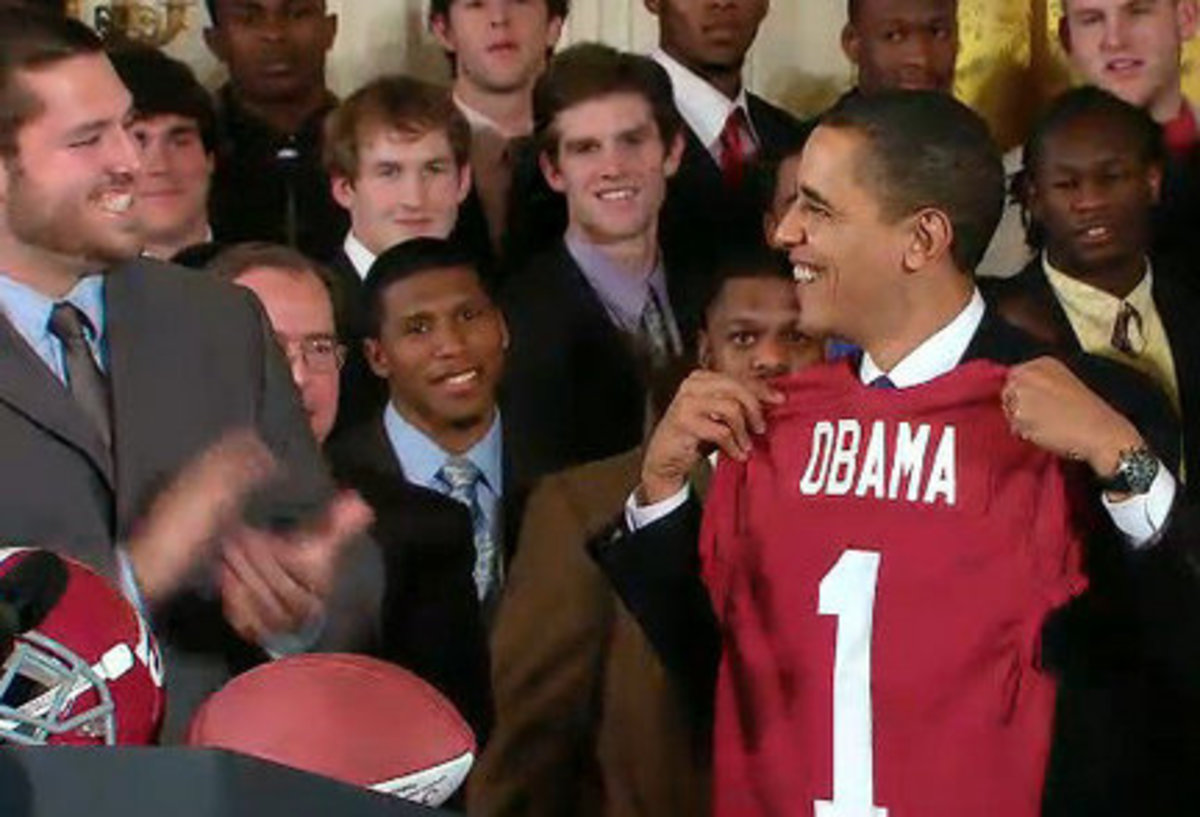
Ten years later, homes have been rebuilt, businesses have flocked to Tuscaloosa, and its population has continued to grow by an average of nearly 2% every year over that stretch.
One of the neighborhoods that was hit the hardest was Alberta City, one of the poorest communities in the area. Sixty-five percent of it was destroyed and since then, it's flourished with new businesses, apartments, homes and restaurants coming to the area.
"I'm really proud of our recovery because where it occurred had the highest levels of poverty, nearly $900 million of un-met infrastructure needs so not only have we rebuilt but we have rebuilt stronger, smarter and safer," Maddox said. "Not only did we have to address the 12.5% of the city that had been destroyed, we had to keep the other 87.5% moving and we were able to do both simultaneously."
On Tuesday, the official 10-year anniversary date of the tornado, three ceremonies will be held at the same time in Rosedale, Forest Lake and Alberta to honor victims and first-responders. At 5:13 p.m., bells will chime across the city, which is the same time the tornado ravaged through each community.
Despite the insurmountable loss, when those bells ring, Maddox will never forget the pain suffered 10 years ago or the resiliency of the people in Tuscaloosa to look adversity in the face and overcome it no matter the obstacles.
"This 10-year anniversary has really hit me harder than anytime since the tornado because we were all so busy, we never really had time to digest or think about what we experienced," Maddox said. "We went from response to recovery and never gave ourselves time to heal as team members here at City Hall. I'll never lose the sadness I feel about April 27, but I also never hope to lose the feeling of inspiration across those aide stations in our city.
"So on Tuesday it will be mixed emotions but I do thank God that I got an opportunity to serve my city during it. I'm thankful that I was a part of this amazing team and amazing city to respond."
This is the third story in a weeklong series about the 10-year anniversary of the Tuscaloosa tornado.
10 Years Later, Tuscaloosa's Process of Coping, Recovering from Tornado Continues
